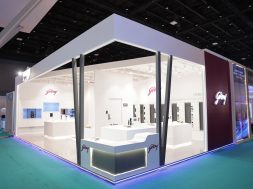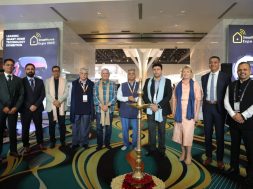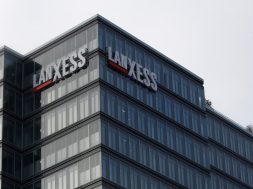Sustainable construction for healthy buildings

Creating a building is one of the most demanding challenges that an individual or the company can undertake, and the major goal of all the players is to create the most valuable building with the available resources, within the defined budget and on time.
We spend most of our lives inside buildings: we work inside the buildings and perform the majority of our non-work related activities in the buildings. If we aspire to do these activities with ease and using the minimum possible resources, we must create comfortable, healthy, safe and sustainable buildings.
Sustainable and eco-friendly structures
Dr SP Anchuri, Chief Consultant, Anchuri & Anchuri, is of the opinion that the performance of a building with regards to comfort, health, safety and sustainability defines the building value. “During the last few years, a lot has been done with regards to green building, but it is now clear that the market needs to focus and support sustainability on its different dimensions (environmental, economic, social and cultural) along with human health and wellbeing. In this way, we may transform our buildings, and as a result our cities, for the benefit of the people and also for the planet, as a whole. Today, taking a holistic approach to construction is only the way to sustainable and eco-friendly structures,” he adds.
Anup Mathew, Senior Vice President & Business Head, Godrej Construction, says, “At Godrej, we are committed towards sustainable development. Having taken several specific steps in this direction, three of our Ready Mix Concrete plants have recently been commended with the Green Pro certification from Indian Green Building Council (IGBC). Our products such as TUFF Recycled Concrete Blocks and AAC Blocks have also been Green Pro certified by Indian Green Building Council. As a responsible industry player, we take every effort to help minimise the adverse impact of our business operations on the environment.”
According to Prof. Charanjit Singh Shah, Founding Principal, Creative Group and Gurpreet Singh Shah, Principal Architect & Urban Designer, Creative Group, the construction industry today has started understanding the importance of sustainable design. There has been a rise in the use of innovative design strategies and use of non conventional sources of energy to design ‘smart yet sustainable buildings’. “Learning from our traditional knowledge and applying it in contemporary design solutions is now being widely practiced to promote a sustainable design. Using solar photovoltaic cells and wind to generate energy on the site itself can help make the project self-sustainable,” they opine.
Intelligent building solutions for HVAC and lighting control are being used whereas management of waste is also being done tactically. Use of STP for grey water treatment, and ETP for landscape irrigation, HVAC and flushing is being implemented. Mitigating the urban heat island effect by intelligent site planning, maximum use of lush green spaces in the design, using green pavers for hardscaping which reduce heat emission and use of softscape to increase ground water percolation reflect the sensitivity and the development of the construction industry in India.
“The industry has been practising sustainable and eco-friendly structure over decades, so the concept is not new,” says Prem Nath, Chief Executive Officer, Prem Nath & Associates. He further says that architects, engineers and builders worldwide are now using construction techniques that have been developed throughout human history. Although new environmentally-friendly building techniques are proposed and tested every year, they all share common objectives for reducing their overall impact on human health and nature. Eco-friendly construction has developed in response to the knowledge that buildings have an often negative impact on our environment and our natural resources. This includes transporting materials hundreds or thousands of miles, which has a negative impact on the energy required to transport them, and also in the form of hazardous chemical emissions from a poorly designed building that creates and traps them.
“Many organisations in India like the IGBC, Bureau of Energy Efficiency, TERI and Assocham are working very hard to get the construction industry prepared for sustainable and eco-friendly structures. Seminars and training workshops are being conducted across the country to train young professionals about different rating systems pertaining to Energy Conservation Building Codes. These capacity building programs are helping professionals in a big way,” says Surinder Bahga of Saakaar Foundation. He further states that in Punjab alone more than 60 such programs have been organised in last three years covering municipal bodies, colleges, field professionals, etc. In addition to that, literature is also being made available. Trained professionals are being empanelled by state governments.
India and the global construction industry
“The Indian construction market is as competent as the global market in terms of technology and timely execution of projects like the Delhi metro. But abroad, more time is spent on planning and detailing so that projects go smoothly after commencement of construction. Arbitrations or litigations often delay the projects and these happen due to lack of planning at the initial stages. Red tape-ism and corruption are other problems being faced by the construction industry in our country,” says Bahga.
According to Anchuri, successful construction projects try to ensure that the job is done right the first time and that no major errors occur during the installation of any construction system. “In order to assure that the installation is perfect, the most important decisions are made during the design and planning stages rather than during the construction stage,” he adds. It is during these preliminary stages that component configurations, material specifications, installation methods and functional performance are decided.
Charanjit states that the Indian construction market is one of the fastest developing markets in India considering the expansive development of not only buildings but entire cities across India. The current trends of smart city proposals, transit oriented developments, mega corridors, redevelopment schemes and many more have opened up the doors of innovation in terms of large span structures, prefabrication and modular systems, and intelligent building systems. “We’re now in a phase where we have the opportunity to construct cities with global standards, high quality of life, maintenance-proof structures and high density accommodations with mixed use developments,” says Charanjit.
“The Indian construction industry is growing with positive developments in economic conditions, improvement in investor confidence, investments in transport infrastructure, energy, and housing projects,” says Nath. He is of the opinion that on the technological front, the picture is abysmally low. If we invested a bit for Research & Development, this could lead to better materials knowledge. Wherein not investing adequately into making technical human resources capable of addressing the professional services needs of the construction industry like litigation, training of artisans, cost indices, contracting, insurance, finance, banking and taxation.
The global market is well-organised, which helps it give quick results and an increasing development in the construction market. Being well-versed with the technologies and spending an amount of profit for the Research & Development has worked positively for the global market.
Projects meeting global standards
“We have designed Agro Mall at Rohtak and CT University at Ludhiana. In both the projects, an attempt has been made to follow construction norms and standards. Many measures are taken to minimise the maintenance of buildings by using durable materials. Detailing has been done in such a manner that buildings require minimum maintenance,” says Bahga.
Anchuri mentions the projects where the company has adopted integrated design method for achieving better life cycle and less operating expenses during the use of the building. “The Nagarjuna Towers at Saidabad facing north-east look very warm, but are actually very cool from the inside with 25 per cent energy efficiency due to balanced passive and active techniques used for building envelope designed by the company,” he adds.
Gurpreet talks about their recent project, the ‘Kongu Convention Centre’, which has been aimed at constructing a multifunctional iconic building using sustainable materials and techniques and achieving low construction costs. “The modulation of the form inspired from a native Indian bird translated into a large span column-free convention centre has been one of the marvels in amalgamation of architecture and engineering. Another one of our projects is the recently-completed Times Square Mall, which is India’s first sustainable shopping complex,” says Gurpreet.
Nath talks about the State Bank of India project by his firm in Gujarat which boasts of ground plus 13 upper floors. It will be developed in Gujarat International Finance Tec-City with integrated building management systems. The complex is planned as a zero disposal building; the garbage directly goes to the underground pipelines and treatment plants. Smart security systems shall be used and everything would be monitored and managed by a central control room. Smart power generation via the use of solar panels shall have integrated solar panel assembly on the rooftop of the building, which would add to power saving amounting to 5-8 per cent of the total power consumption.
Using solar photovoltaic cells and wind to generate energy on the site itself can help make the project self-sustainable.
Prof. Charanjit Singh Shah, Founding Principal, Creative Group and Gurpreet Singh Shah, Principal Architect & Urban Designer, Creative Group
The market needs to focus and ally sustainability on its different dimensions along with human health and wellbeing.
Dr SP Anchuri, Chief Consultant, Anchuri & Anchuri
As a responsible industry player, we take every effort to help minimise the adverse impact of our business operations on the environment.
Anup Mathew, Senior Vice President & Business Head, Godrej Construction
The industry has been practising sustainable and eco-friendly structure over decades, so the concept is not new.
Prem Nath, Chief Executive Officer, Prem Nath & Associates
The Indian construction market is as competent as the global market in terms of technology and timely execution of projects like the Delhi metro.
Surinder Bahga, Saakaar Foundation
Cookie Consent
We use cookies to personalize your experience. By continuing to visit this website you agree to our Terms & Conditions, Privacy Policy and Cookie Policy.






